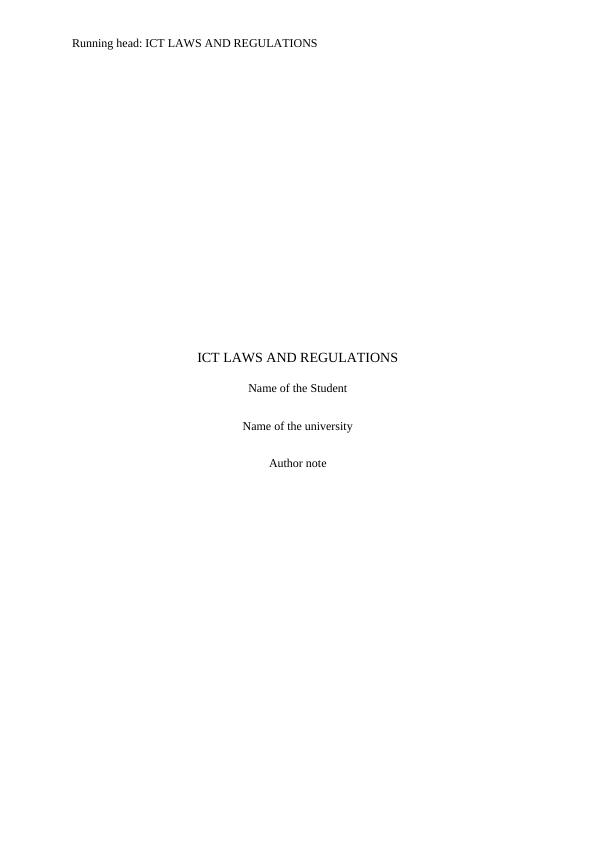ICT Laws and Regulations
Compliance with ICT laws and regulations in the workplace and the use of ICT technology to create e-records in an internship as an IT Admin.
4 Pages665 Words53 Views
Added on 2023-01-03
About This Document
This document discusses ICT laws and regulations, their importance, and their implementation in organizations. It covers topics such as the benefits of transforming manual records to e-records, the Crimes Act 1900 (NSW) related to accessing data without authority, and the roles and responsibilities in implementing IT governance in an organization.
ICT Laws and Regulations
Compliance with ICT laws and regulations in the workplace and the use of ICT technology to create e-records in an internship as an IT Admin.
Added on 2023-01-03
ShareRelated Documents
End of preview
Want to access all the pages? Upload your documents or become a member.
Information Governance .
|5
|822
|356
ICT Governance
|9
|2450
|238
Cyber Security Assignment 2022
|13
|965
|14
IT Security Risk Assessment
|13
|2259
|16
Security and Compliance
|4
|632
|163
IT governance. 0. IT Governance. 2. IT governance. Indi
|4
|663
|33


